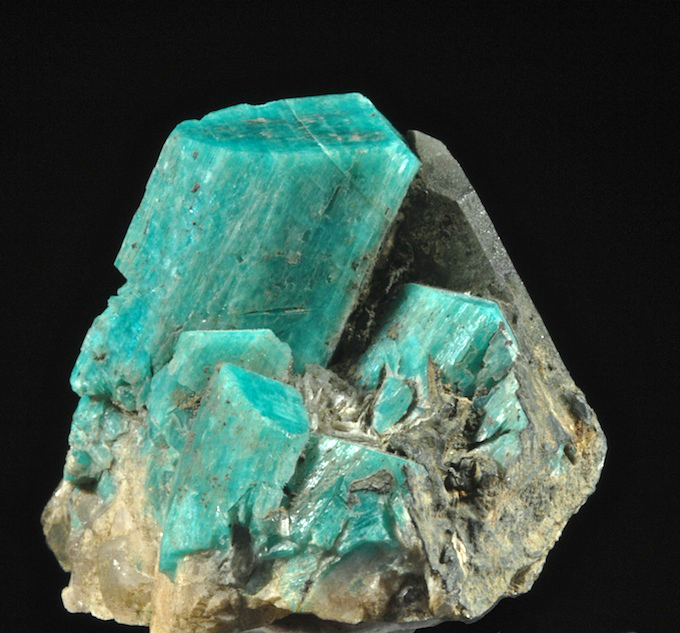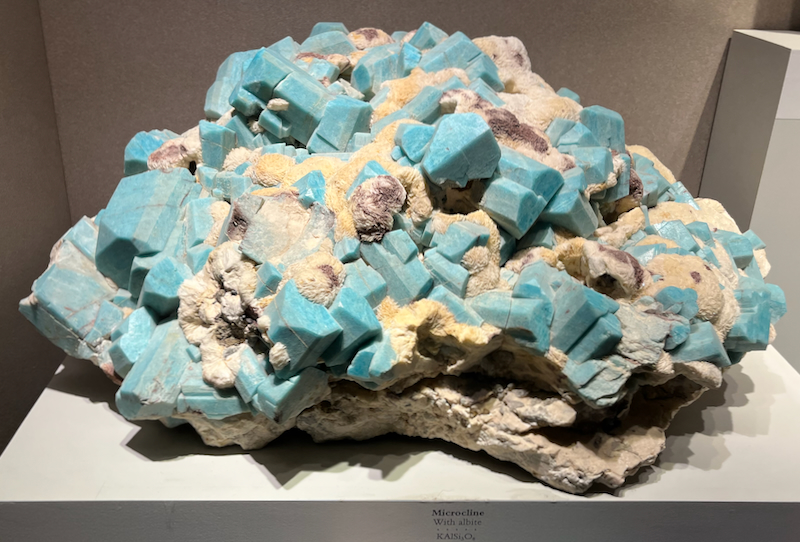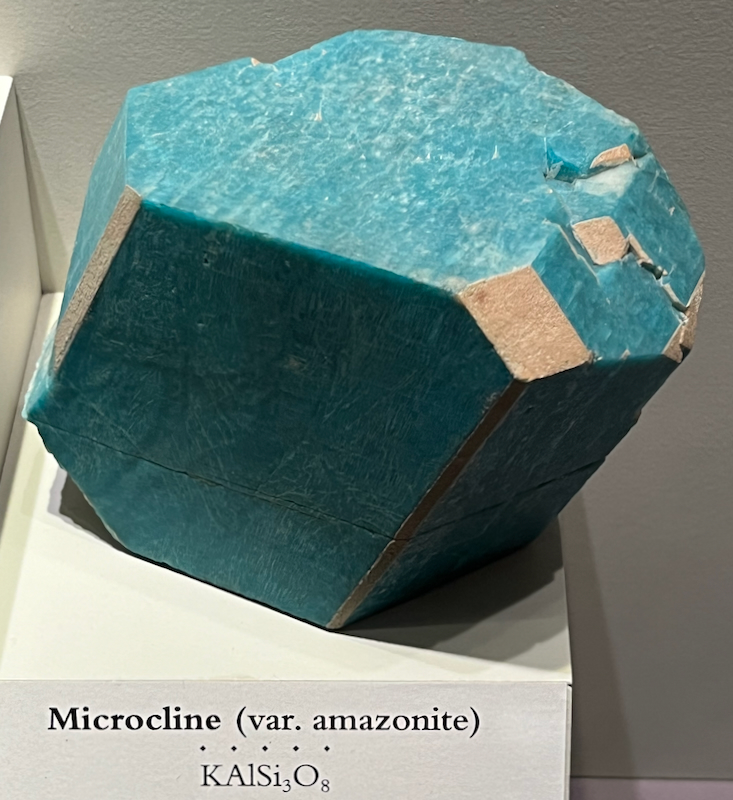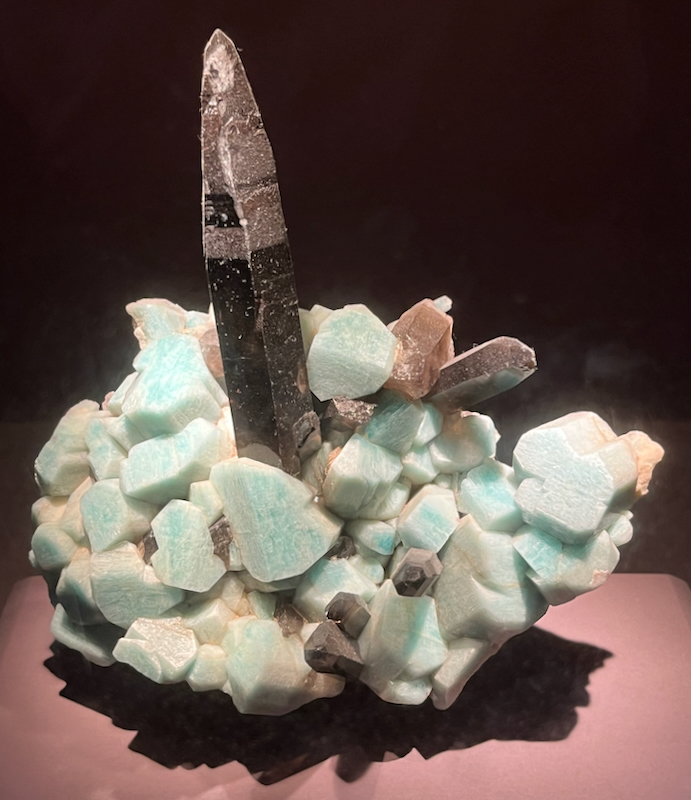Amazonite
Although you might assume this mineral is found in large jungles, the best pieces seem to come from mountains in cool, dry areas, such as the mountains of Colorado. As with moonstone, sunstone, and labradorite, amazonite is a kind of feldspar, specifically the variety called microcline. It’s usually a light blue-green color but can be more blue, more green, or darker blue-green, with the color being caused by tiny amounts of lead or iron. Where it occurs in Colorado, in the Lake George area, amazonite usually forms along with smoky quartz, and specimens that include both minerals can be quite striking, with the way the dark quartz makes the amazonite color really stand out. Although the original “discovery” of amazonite reportedly happened near the Amazon River in the 1800s, no one has seen a piece of this mineral that’s been confirmed from that area. On the other hand, pieces of the mineral have been found in ancient Egyptian tombs that were built quite a while before the 1800s! The exact location and time of its discovery is lost to history, as they say.
| Formula | Group or Type | Shape | Hardness | Specific Gravity | Streak | Luster |
|---|---|---|---|---|---|---|
| K(AlSi3O8) | Feldspar | Triclinic | 6–6.5 | 2.6–2.8 | White | Vitreous to pearly |



